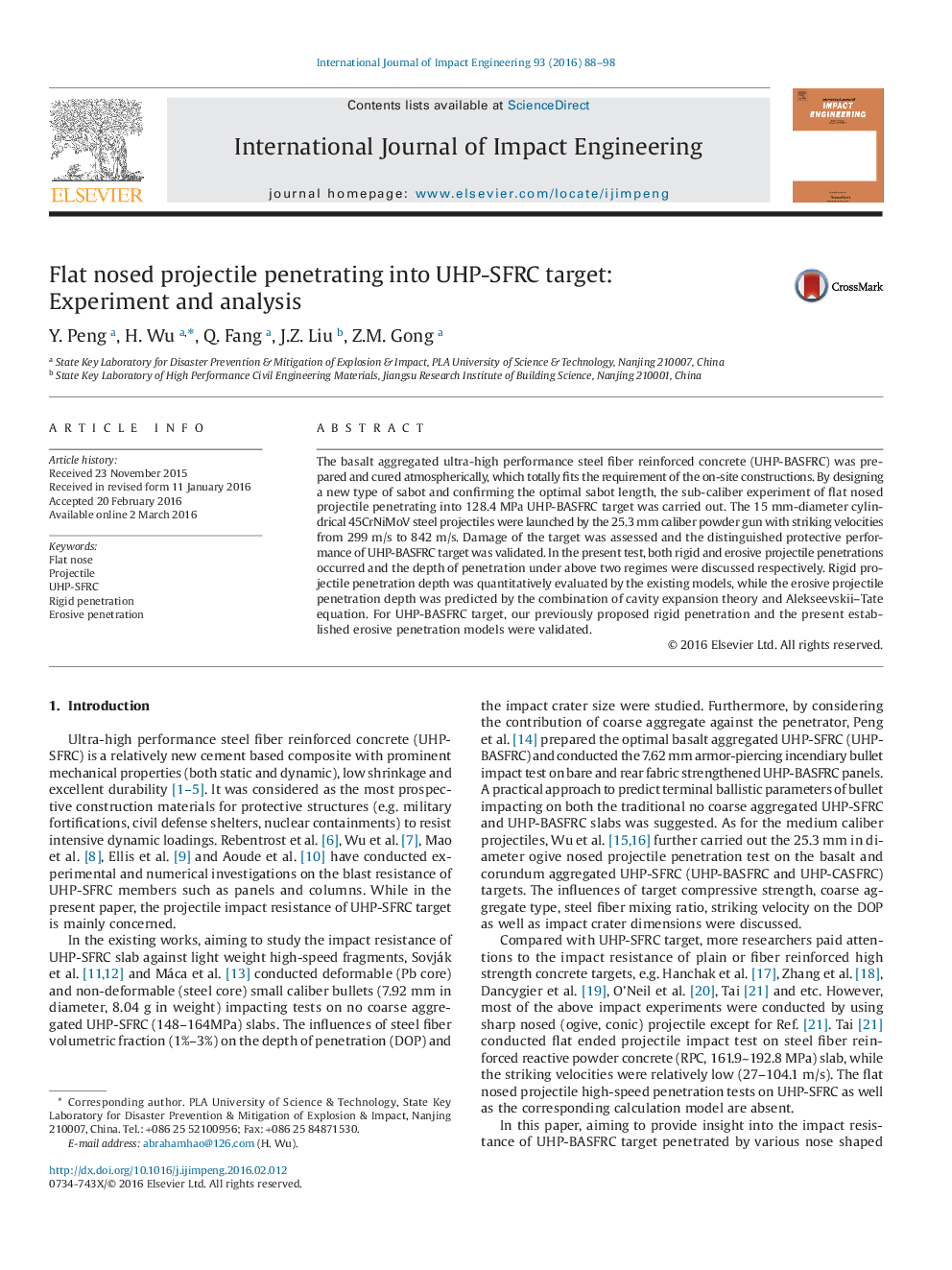| کد مقاله | کد نشریه | سال انتشار | مقاله انگلیسی | نسخه تمام متن |
|---|---|---|---|---|
| 782742 | 1464058 | 2016 | 11 صفحه PDF | دانلود رایگان |

• Flat nosed steel projectile penetration test (299–842 m/s) into UHP-SFRC target was performed.
• Sub-caliber technology was utilized and a new type of sabot was designed.
• Our previously proposed rigid penetration model was validated for diversified projectile nose shapes and broad striking velocity range.
• An erosive projectile penetration model for concrete target was established and verified.
The basalt aggregated ultra-high performance steel fiber reinforced concrete (UHP-BASFRC) was prepared and cured atmospherically, which totally fits the requirement of the on-site constructions. By designing a new type of sabot and confirming the optimal sabot length, the sub-caliber experiment of flat nosed projectile penetrating into 128.4 MPa UHP-BASFRC target was carried out. The 15 mm-diameter cylindrical 45CrNiMoV steel projectiles were launched by the 25.3 mm caliber powder gun with striking velocities from 299 m/s to 842 m/s. Damage of the target was assessed and the distinguished protective performance of UHP-BASFRC target was validated. In the present test, both rigid and erosive projectile penetrations occurred and the depth of penetration under above two regimes were discussed respectively. Rigid projectile penetration depth was quantitatively evaluated by the existing models, while the erosive projectile penetration depth was predicted by the combination of cavity expansion theory and Alekseevskii–Tate equation. For UHP-BASFRC target, our previously proposed rigid penetration and the present established erosive penetration models were validated.
Journal: International Journal of Impact Engineering - Volume 93, July 2016, Pages 88–98